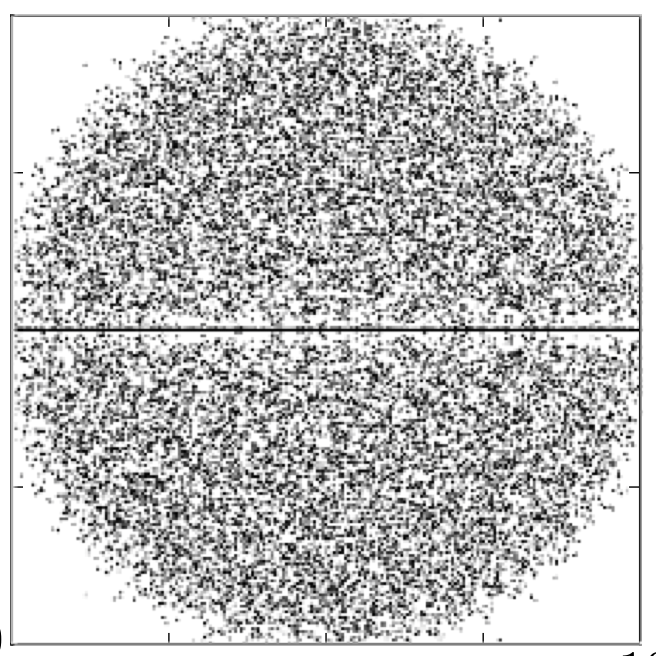$M$ is an iid random matrix with $M_{ij} \sim \mathcal{N}(0,\frac{g^2}N)$ except that the diagonal entries are $-1$.
I am to compute, in the limit $N\to\infty$,
- the eigenvalue/singular value spectrum/distribution. I.e. we order the eigenvalues according to their relevant values such that $\lambda_1 \ge \lambda_2 \ge \dots \ge \lambda_N$, and then we hope to know the mean of each $\lambda_i$) of a random matrix $M$:
$$\bar \lambda_1, \bar\lambda_2, \dots, \bar \lambda_N$$
- the mean ($\ln$) thereof: $$\langle \ln \lambda \rangle = \frac{\ln\lambda_1 + \ln\lambda_2 + \dots + \ln\lambda_N}N.$$
It seems we can calculate $\langle \ln \lambda \rangle$ using $\det(M)$. Then how can we compute the determinant (also a statistics) of such a random matrix?
We possibly need to use the Wigner semicircular law.
Possible methods in random matrices or more general probability include
reductions, the Fourier method, the moment method, the Lindeberg swapping trick, individual swapping, Stein's method, Predecessor comparison.
$\\\\$
I hope to know any books or papers about solving the above (or other) statistics of this (or simpler similar) random matrix, or of other 'symmetric' (w.r.t. probability distribution of each entry) matrices, or of other kinds of (large) square random matrices. The literature of random matrices is vast so I hope to narrow down the scope of my research. I can read them to find clues. Exact solutions are welcome but not necessarily expected right now.
(This section is unnecessary for answering the question:) An example of calculation is given as (note that $\mu_i$ below is actually eigenvalues denoted as $\lambda_i$ above. I hope to know what is more general than the example):
This seems to be a seminal paper in the topic: https://journals.aps.org/prl/abstract/10.1103/PhysRevLett.60.1895
A closely related post: Spectrum of large random asymmetric matrices with correlation


